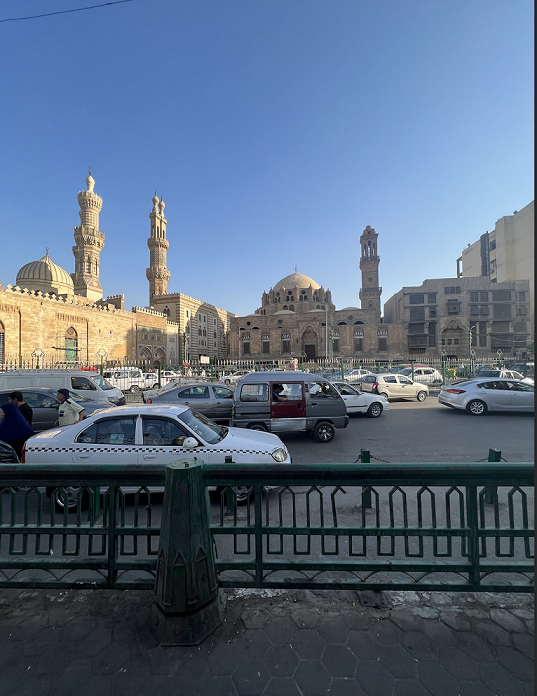home_news
Arabic, Artistry, and Bridges of Belonging in Oman
.png)
My name is Giulianna Larson, and I am a part of the Arabic Language and Culture minor at Loyola. In addition to Arabic, I am majoring in Multimedia Journalism and have minors in Spanish Language and Political Science. Together, I hope to use my studies to amplify the voices of underrepresented communities and shift the narrative of the global community to be inclusive and accurate.

This past summer, I was lucky enough to have the opportunity to spend one week in Oman. After two years of Arabic, I was excited to immerse myself in part of the Arab world and speak in Arabic with Oman’s local community. I have traveled to Amman, Jordan; however, I was very young and had no knowledge of Arabic.

Admittedly, I did not know a lot about the country and its culture. My dad and I got the idea to go to Oman for our vacation after watching a documentary about Omani nature and culture. From the documentary alone, it was clear Oman’s land is sacred to the Omani identity. By the end of my travels, I deeply appreciated Oman’s intentional intertwinement of artistry, hospitality and homeland.

One of the first architectural features I noticed in Oman were their intricately designed doors. Most commonly made of teak or metal, the doors were carved with a variety of patterns, including representations of Islamic geographical depictions of Oneness, lush plants and even scenes of animals. Without any prior knowledge, my first reaction was to study all the tedious designs on an object which is used every day. Upon speaking with a local woman, I learned the ornate door-carvings are an effort to welcome guests. I was already amazed, but it wasn’t until I was drinking a cup of tea on the balcony late that night that I fully captured the deep symbolism of the doors.

Since teak is not an abundant natural resource in Oman, its placement at the front of homes, masjids and government buildings symbolizes Oman’s efforts to connect with other nations and integrate foreign raw materials into national architectural styles, just their hospitality aims to integrate travelers into Omani daily life.

In addition to the beautifully-ornate doors, one of Oman’s main forms of artisanship is clay pot. Once used for water and food collection, today the clay pots are sold as art. However, the enriching part about the creation of the pots is that artisans use Omani clay as the main ingredient. Between the teak carved-doors and the pots made from Omani clay, I was in awe to understand the enriching connections between homeland and hospitality in Omani art. Through these connections, it is clear Omani art embodies an appreciation for humanity and ties to homeland. Upon these reflections, it was ever the more apparent why homelands, with their native resources and culture, must be preserved. Homelands signify how both nature and humanity not only coexist, but co-create a sense of belonging. Just as humans long for a home as a means of peace and community, native sediments settle into the ground, supporting the century-old roots of rich fruit trees and colorful flowers. Homelands represent how native communities not only welcome others, but also integrate others’ connections to their land through art.

In Omani craftsmanship, motifs of homeland and hospitality compliment each other to represent the vital balance of preservation and inclusion to cultivate belonging. Although art is not inherently dependent on language, my communication with locals in Arabic intensified my appreciation for Omani art forms and showed me how these motifs operate in daily life. As global citizens, we should not hesitate to enthrall ourselves with both ancient and modern art. Through such discipline, we gain a greater understanding of universal themes such as hospitality and the longing to belong. Lines and borders on a map cannot limit the representation of community and longing in art.


